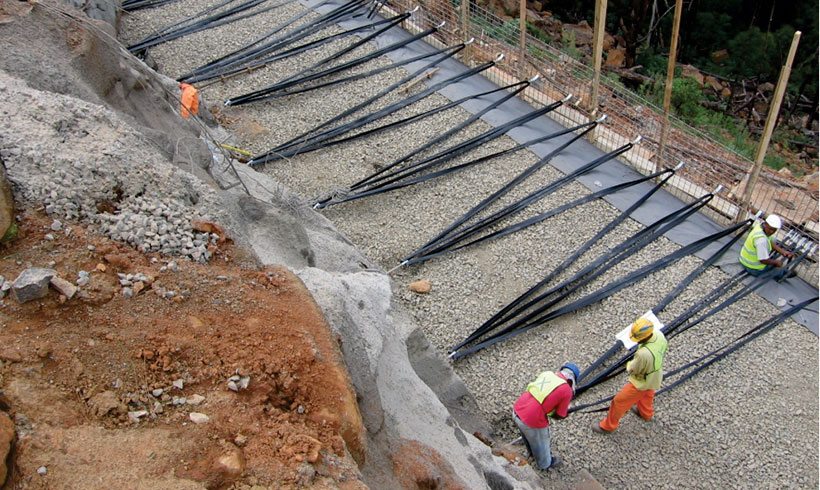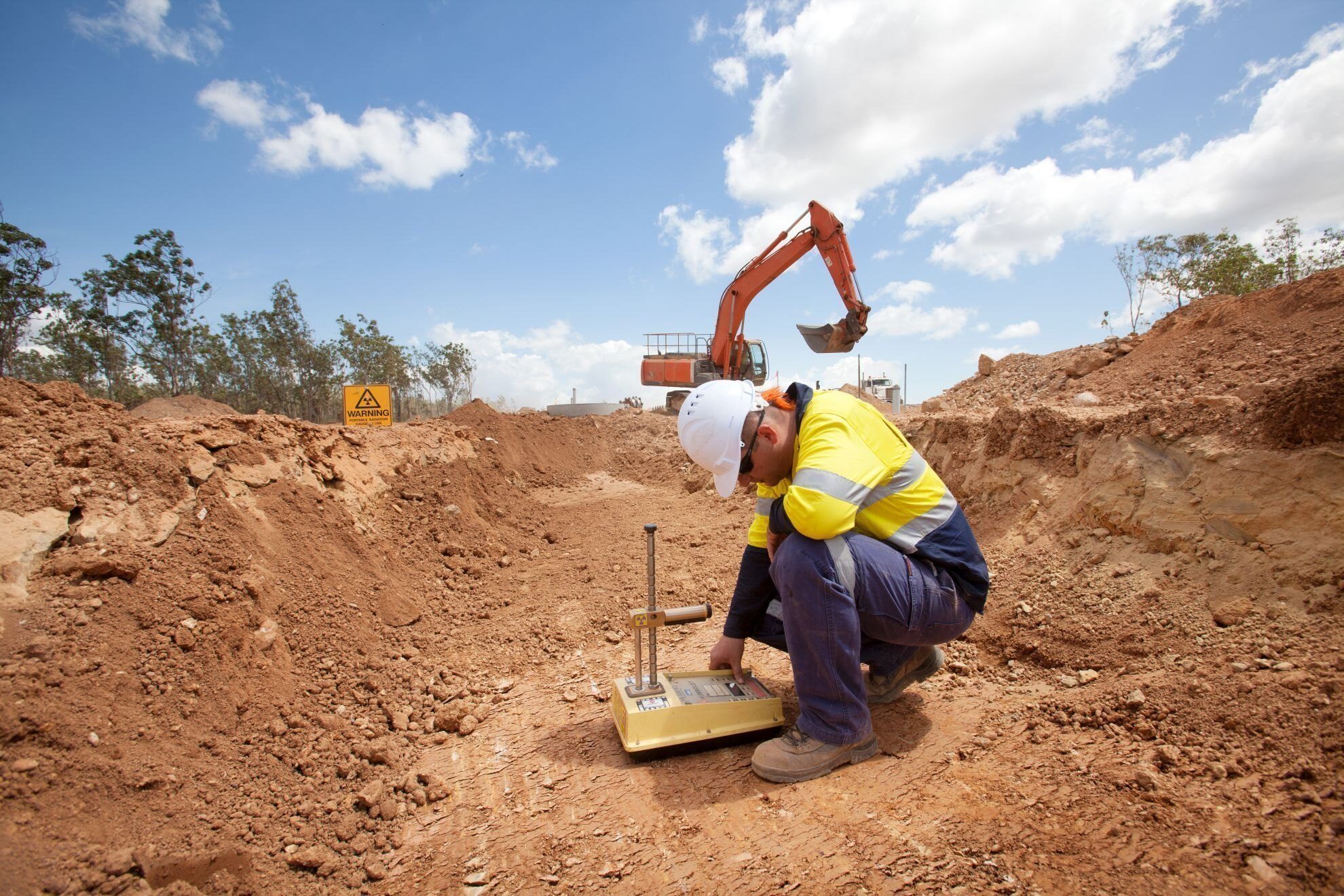About Geotechnical Engineering For Construction Projects
4 Easy Facts About Geotechnical Engineering For Construction Projects Shown
Table of ContentsNot known Details About Geotechnical Engineering For Construction Projects Geotechnical Engineering For Construction Projects Things To Know Before You BuyGeotechnical Engineering For Construction Projects for DummiesGeotechnical Engineering For Construction Projects Fundamentals ExplainedSome Known Details About Geotechnical Engineering For Construction Projects The Best Guide To Geotechnical Engineering For Construction ProjectsNot known Details About Geotechnical Engineering For Construction Projects
and Kovacs, W. (1981 ), An Intro to Geotechnical Engineering, Prentice-Hall, Inc. Deep Scan Technology (2023 ): Deep Check Tech reveals covert frameworks at the website of Denmark's highest structure. "Geofrost Coring". GEOFROST. Retrieved 20 November 2020. Han, Jie (2015 ). Principles and Method of Ground Improvement. Wiley. ISBN 9781118421307. RAJU, V. R.Ground Improvement Technologies and Situation Histories. Singapore: Study Posting Solutions. p. 809. ISBN978-981-08-3124-0. Ground Improvement Principles And Applications In Asia. Pariseau, William G. (2011 ). Layout analysis in rock mechanics. CRC Press. Hegde, A.M. and Palsule P (Geotechnical Engineering for Construction Projects).S. (2020 ), Performance of Geosynthetics Reinforced Subgrade Subjected to Repeated Vehicle Loads: Experimental and Numerical Research Studies.
Cengage Knowing, Stamford, 666 p. Atkinson, J., 2007. The auto mechanics of soils and foundations. The Observational Method in ground design concepts and applications.
Indicators on Geotechnical Engineering For Construction Projects You Need To Know
Research laboratory and area testing plays a crucial duty in this process. By removing samples from the planet's subsurface and using a suite of examinations, geotechnical engineers can forecast the behaviour of soil layers and review their suitability for numerous building efforts. The essence of geotechnical engineering in civil engineering can not be overemphasized, attributable to several aspects: The first action in any geotechnical research entails identifying the dirt type at the building website.
Comprehending these qualities makes sure that just ideal dirt kinds are chosen for the advancement, therefore averting prospective architectural failures. The foundation serves as the bedrock of any type of construction project. Choosing the proper structure type is a decision that depends upon the extensive analysis given by geotechnical design. This ensures the longevity and stability of structures by fitting the tons they will certainly birth.

Geotechnical site examination is a crucial action in the preparation and execution of any building job. It involves the collection and analysis of information associated with the physical buildings of dirt and rock underneath a suggested building site. This information is essential for the layout and building of safe, stable, and sustainable structures.
Geotechnical Engineering For Construction Projects - Questions
In this blog, we will certainly delve right into the importance of geotechnical website investigation, its different components, and how it profits construction tasks. Geotechnical site investigation, also recognized as subsurface exploration, includes a collection of activities intended at identifying the dirt, rock, and groundwater problems at a construction website. The main goals are to identify prospective geotechnical threats, examine the engineering residential or commercial properties of subsurface products, and give suggestions for the layout and construction of foundations, maintaining wall surfaces, and other frameworks.
This may include geological maps, aerial pictures, previous investigation records, and historical information. The workdesk research study aids in determining possible geotechnical issues and intending the subsequent fieldwork. Following the workdesk research, a website reconnaissance is performed to aesthetically check the site and its environments. This involves observing the topography, drainage patterns, existing structures, plant life, and any kind of indications of instability or disintegration.
A Biased View of Geotechnical Engineering For Construction Projects
Superficial test pits are dug deep into to directly observe and example the soil and rock. This approach is beneficial for studying the top layers of the subsurface and recognizing near-surface threats. Non-invasive geophysical techniques, such as seismic refraction, ground-penetrating radar (GPR), and electric resistivity tomography (ERT), are used to map subsurface problems and detect anomalies.
Dirt and rock samples collected during the field investigation are subjected to lab screening to determine their physical and mechanical properties. These examinations provide vital data for geotechnical evaluation and style.
The main advantage of geotechnical website examination is making certain the safety and security of frameworks. By understanding the subsurface problems, designers can make foundations and other structural aspects that can endure the lots and ecological forces they will go through. This decreases the threat of negotiation, decrease, and structural failure.
Some Known Details About Geotechnical Engineering For Construction Projects
Comprehending dirt attributes can guide the option of excavation techniques, dewatering approaches, and ground improvement procedures. This guarantees reliable and risk-free construction methods. Geotechnical website investigations are often needed by building codes and guidelines. Complying with these requirements makes sure conformity with legal and security criteria, preventing possible lawful obligations and job hold-ups.
This info is invaluable for project managers, designers, and service providers in developing sensible timetables, budgets, and contingency plans. Geotechnical Engineering for Construction Projects. Skyscraper Structure in a Coastal AreaIn a seaside city, a skyscraper household structure was intended on a site with thought loose sand deposits and a high water table. A detailed geotechnical investigation, consisting of borehole boring, CPT, and geophysical surveys, was carried out
The 20-Second Trick For Geotechnical Engineering For Construction Projects
Based on these findings, the foundation style was changed to consist of deep pile structures expanding right into stable strata, and ground improvement strategies, such as vibro-compaction, were applied to minimize liquefaction threats. This positive approach made certain the safety and stability of the structure while avoiding pricey post-construction remediation. Infrastructure Growth on a Sloping TerrainA major infrastructure job, involving the construction of a freeway and bridges, was prepared on a sloping surface with high slopes.

The Leaning Tower of Pisa (Italy), a renowned look at this website architectural wonder, is notorious for its unintentional tilt from significant geotechnical problems. The tower's foundation was improperly designed to take care of the soft, unsteady soil under it, resulting in irregular settlement and its unique lean. Our world is dotted with remarkable facilities projectsfrom looming high-rises to stretching bridgesall standing testament to the evolution of the different building and construction tools and methods available.
Geotechnical design is a specific field within civil engineering that concentrates on examining the actions of earth products. This branch dives deep into the groundinvestigating just how the soil, rock, and groundwater at a building and construction website can influenceand be influenced bythe facilities that we put up on and into them. Prior to a solitary block is laid or a concrete foundation put, geotechnical engineers probe see this site into the earthgathering essential data concerning the site's soil structure, rock framework, and groundwater degrees.
The 9-Second Trick For Geotechnical Engineering For Construction Projects

is a device made use of to assess the integrity and load-bearing capacity of piles during setup, leveraging the concept of wave breeding. It maximizes construction effectiveness by offering real-time analyses, hence making certain secure and effective pile foundations. One of the useful applications of geotechnical engineering involves deciding and carrying out the ideal techniques for foundation building.
Stack driving represents more than the mere act of inserting architectural components right into the ground. On the contrary, it is a thoroughly orchestrated process of moving a structure's lots past the much less stable dirt layers more detailed to the surfacedown to the extra significant strata that lie beneath. In the case of heap driving, take into consideration exactly official website how geotechnical engineers adeptly utilize this method to evenly disperse the framework's weight.